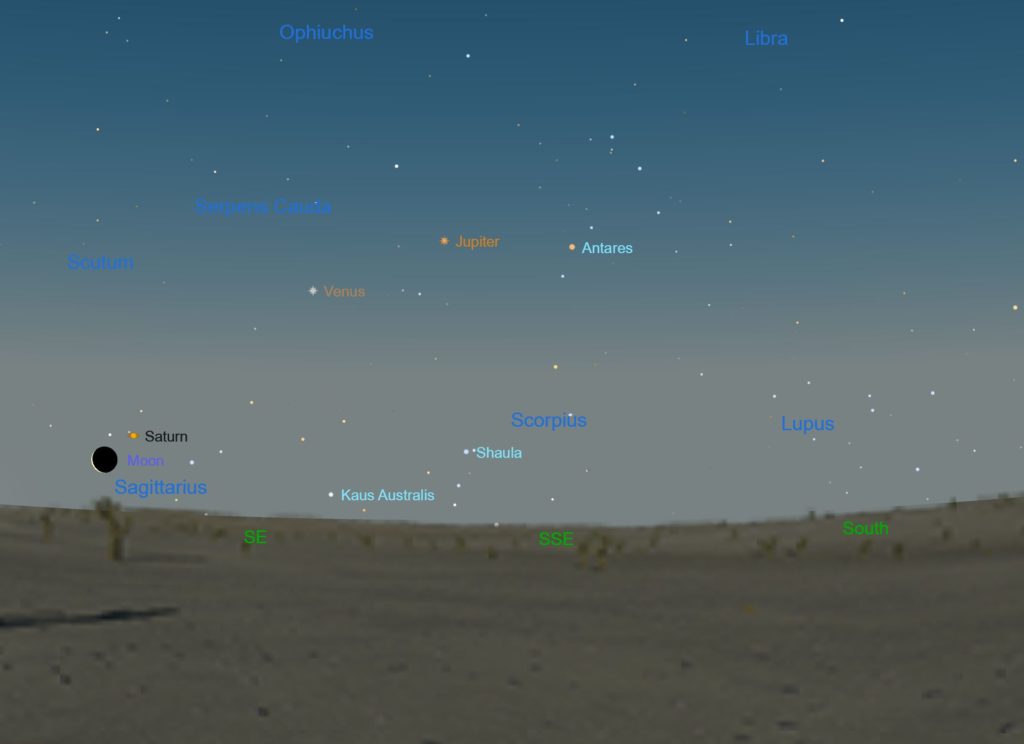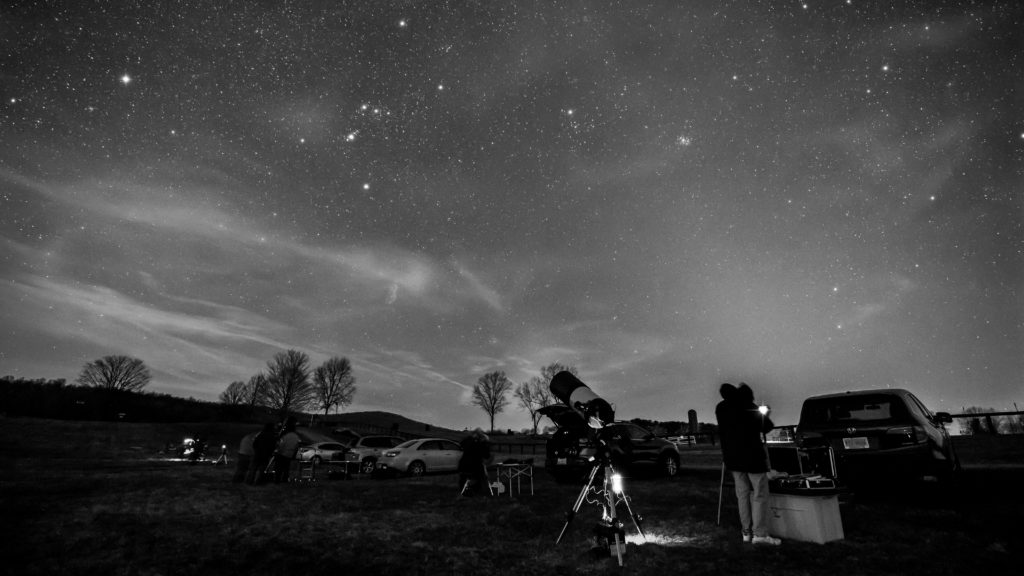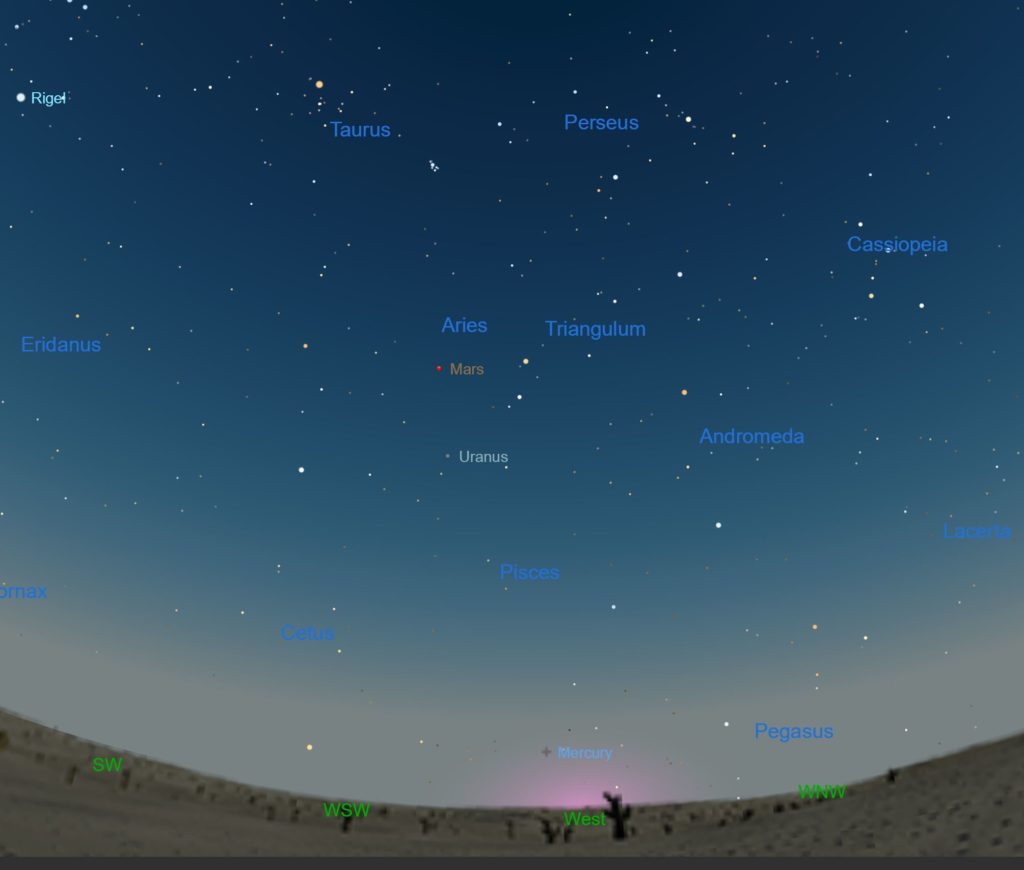The Night Sky This Month – February 2019

It may be a little cold in your part of the world, or it may not. But when the weather allows, head outside because February is always a good month for stargazing. The constellations Orion, Canis Major, Taurus, and Auriga dominate the northern sky this month, while southern observers see these same groups along with Puppis, Carina, and Vela, constellations which harbor some of the best sights the night sky has to offer. There are also plenty of planets to see this month along with a chance to glimpse the glow of the zodiacal light, the Sun’s light reflected off tiny grains of dust left over from the formation of the solar system. Here’s what to see in the night sky this month…
Publisher’s Note: Mid-to-late February is also the time for the annual offering of the ‘Fundamentals of Stargazing’ course at CosmicPursuits.com. This in-depth course is ideal for amateur astronomers who wish to gain a comprehensive knowledge of what to see in the night sky and how to see it. This course is offered just once a year. More details soon.
1-2 February. Look for a lovely collection of bright celestial objects in the pre-dawn sky. Over the southern and southeastern horizons are the planets Jupiter, Venus, and Saturn along with the slender crescent Moon and the bright star Antares in the constellation Scorpius. Venus is the brightest of the bunch, save for the Moon, but Jupiter is not far behind. The biggest planet rises about 2 a.m. local time as the month begins and shines at a respectable magnitude -1.9, brighter than any star. The disk of the planet spans about 33”, big enough to reveal detail in a telescope on mornings of steady seeing.

4 Feb. New Moon, 21:04 UT
10 Feb. Mars lingers in the southwestern sky after sunset. Today it’s joined by a thick crescent Moon. At 1st magnitude this month, Mars is still respectably bright but too small now to give up much detail in a telescope.
12 Feb. While we’re on the subject of Mars, today the planet is just 1.1o north of the planet Uranus. See both easily with a pair of binoculars. Or use a telescope and power up to see the disk of each world. Mars outshines Uranus by four magnitudes, although Mars is 234 million km from Earth today, while Uranus is about 3 billion km away. The disk of Mars is about 6″ across, while Uranus spans about 2″.
12 Feb. First Quarter Moon, 22:26 UT
13 Feb. The 8-day-old Moon brushes past the Hyades star cluster and the bright star Aldebaran in the constellation Taurus. Today and tomorrow are good days to grab a telescope and look for sunlight slowly flooding the floor of the big crater Copernicus, one of the most stirring sights visible on the lunar surface.

18-19 Feb. Venus and Saturn are just a finger-width apart in the southeastern sky before sunrise. Venus this month appears to move quickly back eastwards towards the Sun, and its brightness drops from magnitude -4.3 to -4.1. By mid-month, Venus rises at about 3 a.m. and is by far the brightest object in the pre-dawn sky. Saturn rises a little earlier each day, rising about 2.5 hours before the Sun by the end of the month, and it grows a little brighter on its way to opposition this summer. In the first part of February, Saturn is east of Venus. But as Venus moves quickly eastward, they switch places around the 18th.
19 Feb. Full Moon, 15:54 UT
21-28 Feb. Look for the zodiacal light in the west well after sunset. Very dark sky is a must. This tall, faint pyramid of white light, which slopes to the left towards the Pleiades and Hyades, is simply sunlight scattered off fine dust particles in the plane of the solar system. It’s sometimes called the ‘false dawn’ or the ‘false morning’. See image above.
27 Feb. Mercury reaches greatest eastern elongation 18o from the Sun. Look for the planet in the western sky after sunset just above the western horizon. Binoculars will help you pick it out of the twilight.

26 Feb. Last Quarter Moon, 11:28 UT
28 Feb. In a repeat performance from earlier this month, the waning crescent Moon, Saturn, Venus, and Jupiter are aligned in an arc from the east-southeast to the south before dawn.
1 March. Look for Saturn less than a degree south of the waning crescent Moon in the southeastern pre-dawn sky.
2 March. The Moon grazes another planet, this time passing about 1.2o north of the brilliant planet Venus in the pre-dawn sky.